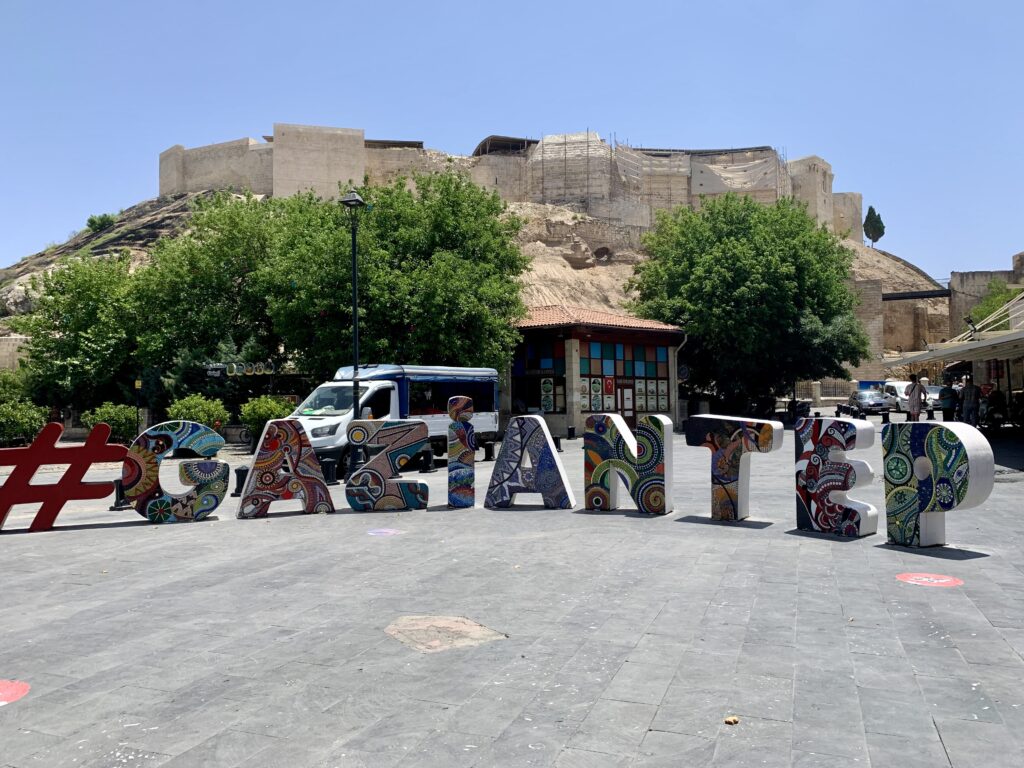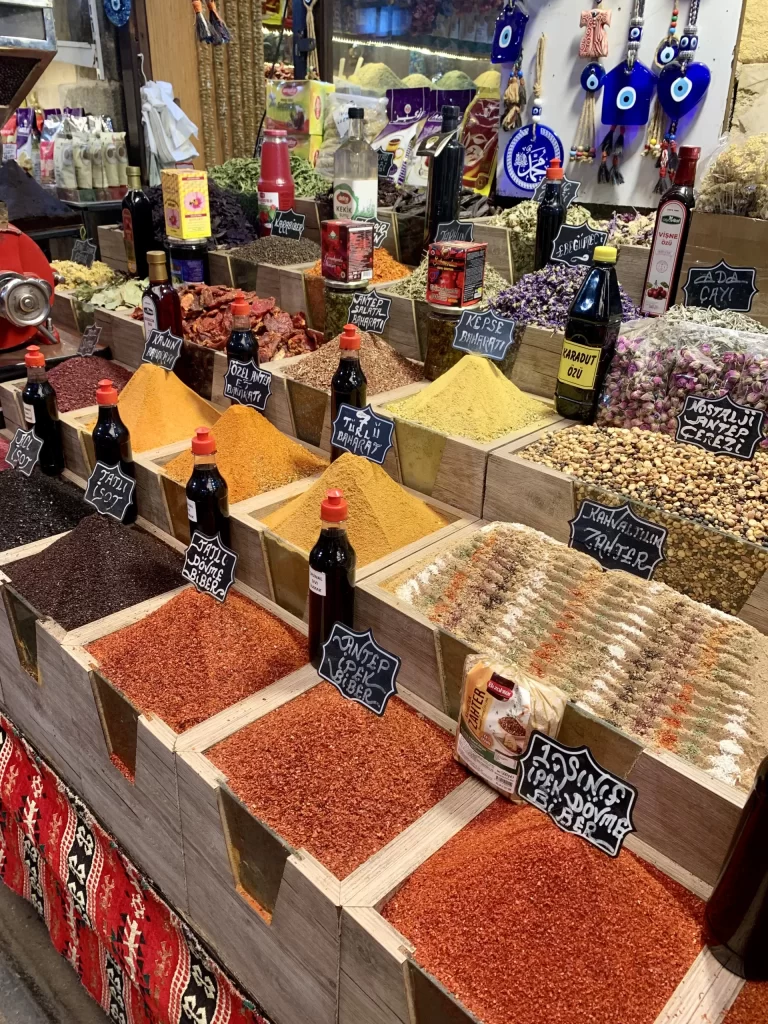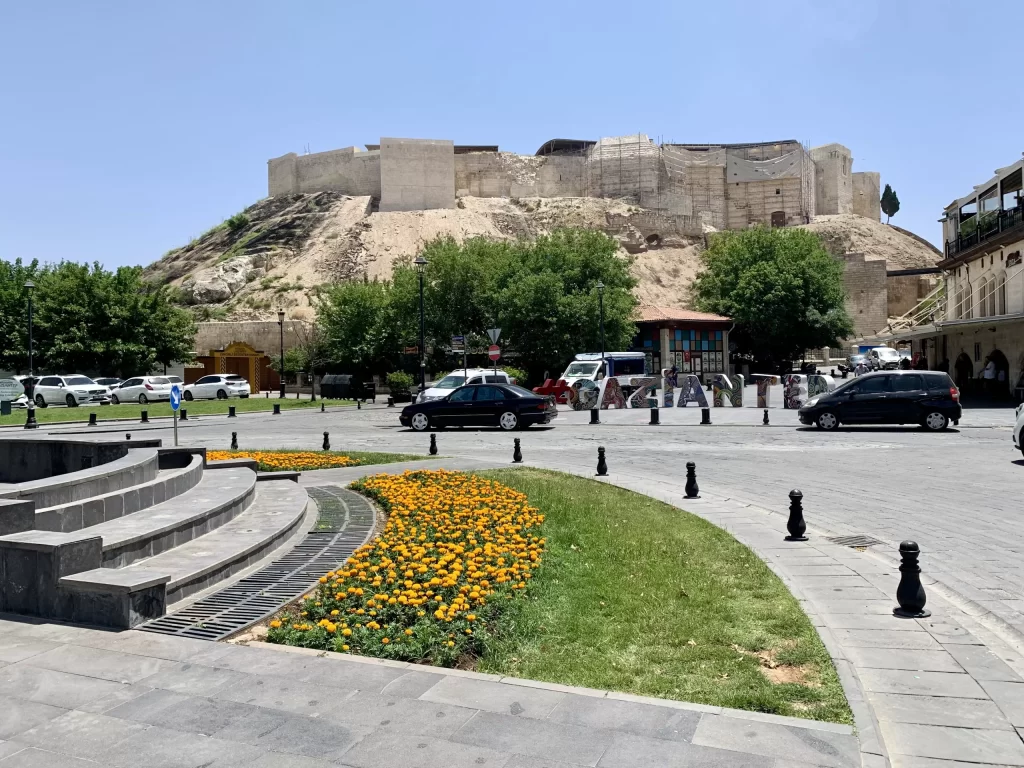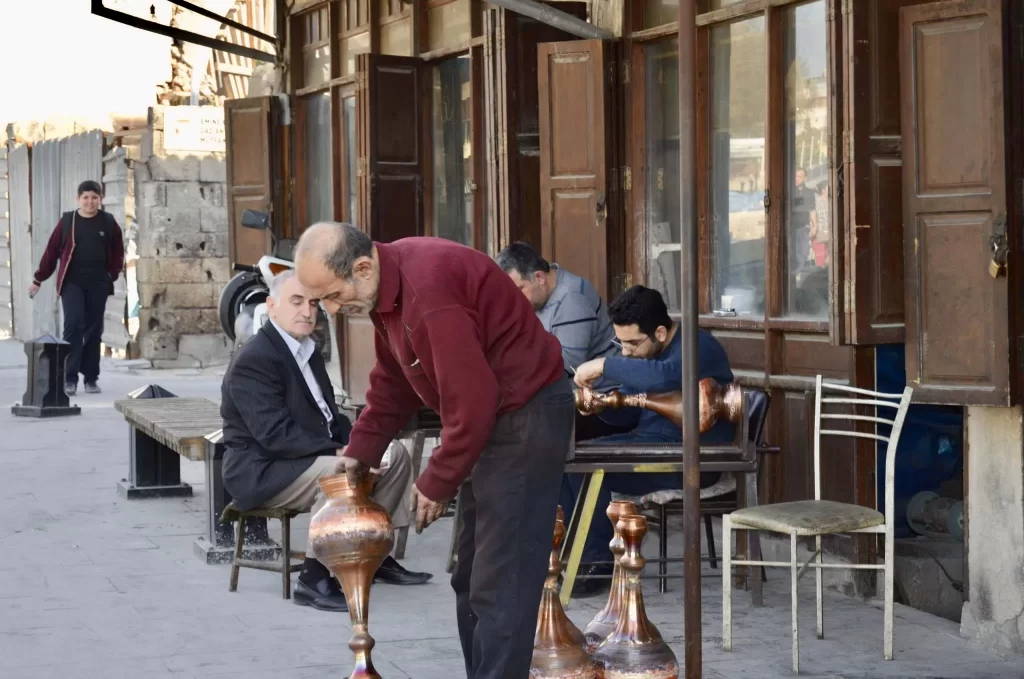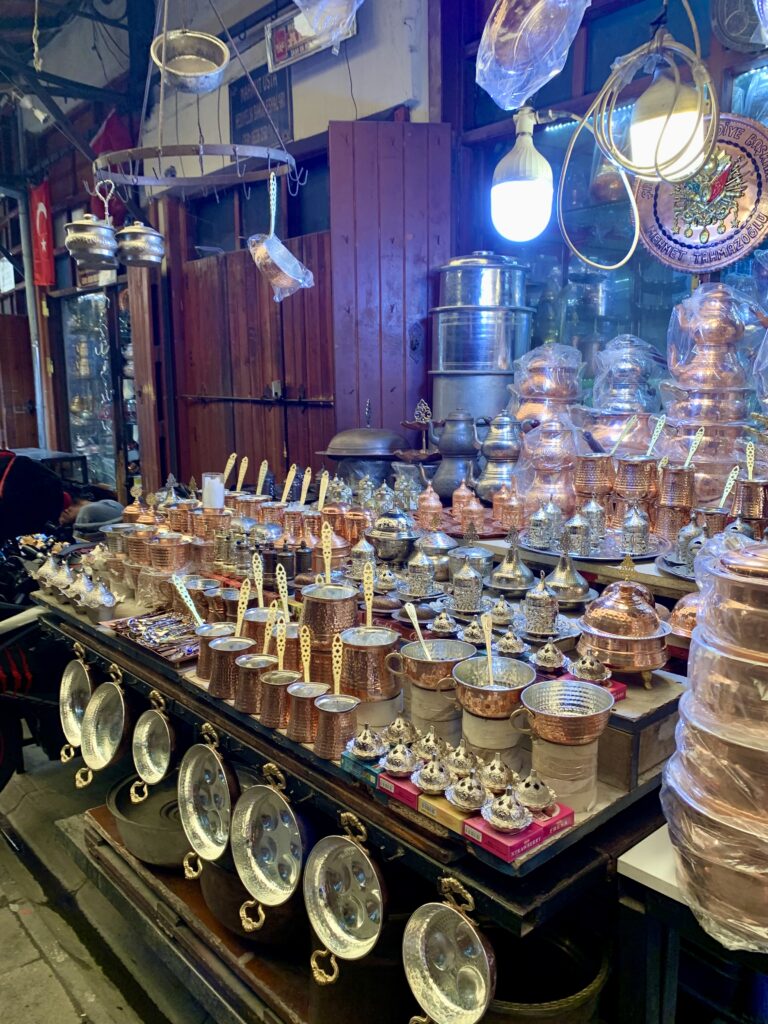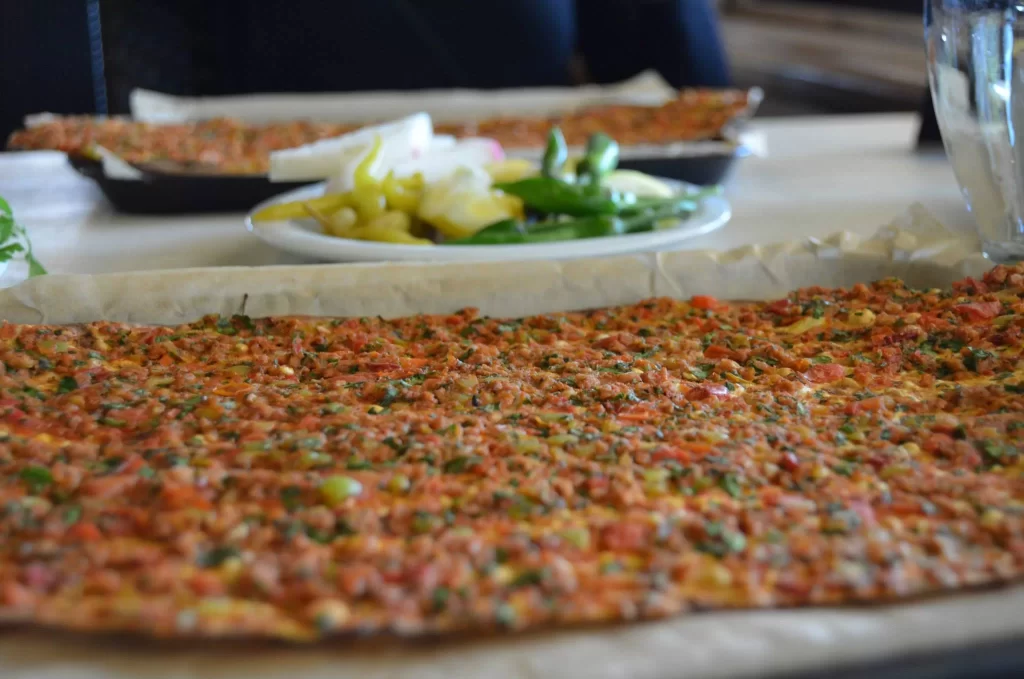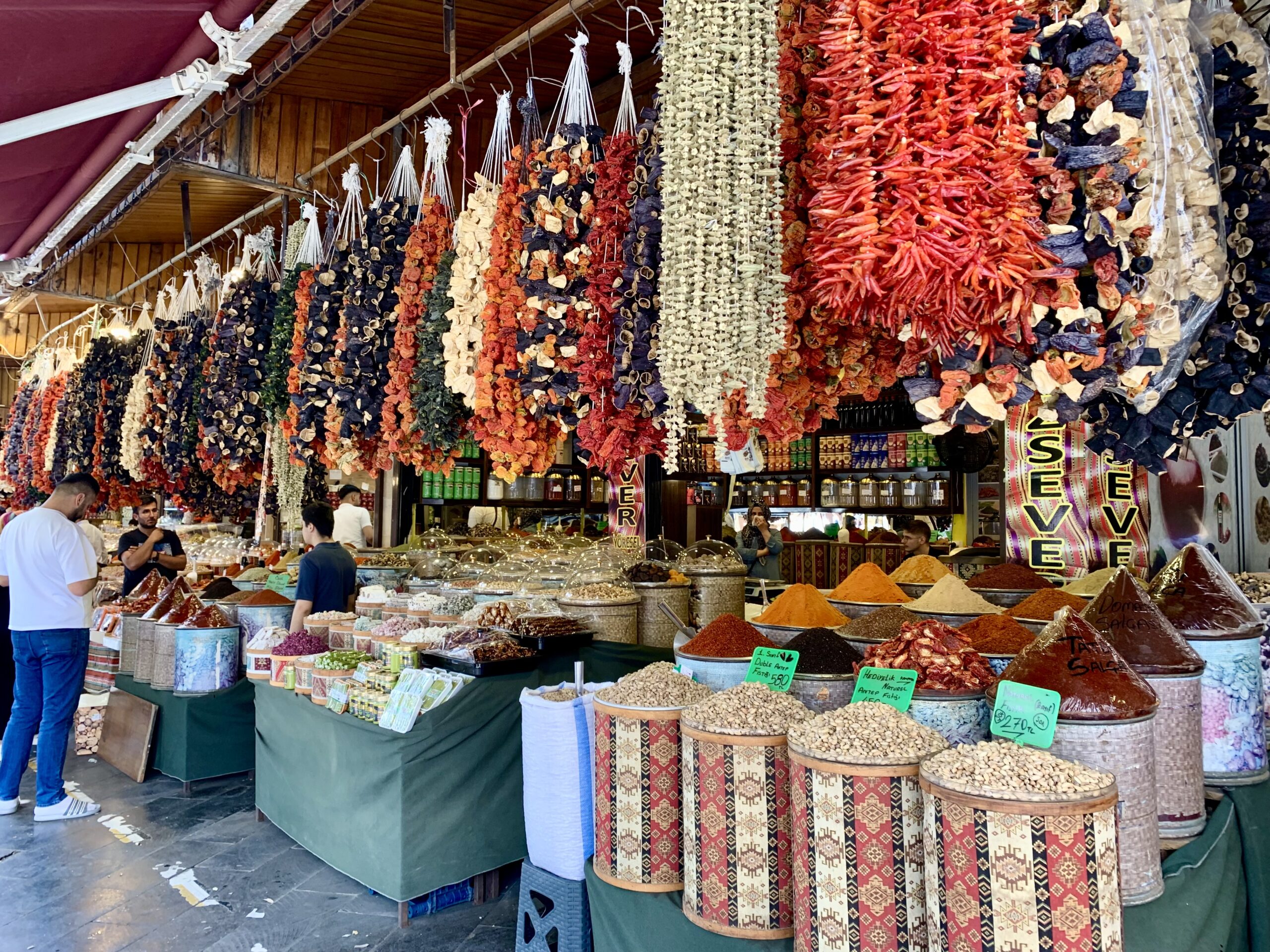It’s almost midnight, but the historic centre of the southeastern Turkish metropolis is still full of life. The loud sound of drums, traditionally a part of the entertainment in the Turkish East, can be heard from a nearby establishment. The louder the better. Several lahmacun, flatbreads with a mixture of minced meat and vegetables drizzled with lemon juice, sometimes called Turkish pizza, land on the table. They’re cut into bite-size pieces so there’s enough for everyone. We are in Gaziantep, a city of food and Turkish metropolis that is an almost ideal blend of modernity and tradition.
The food is sacred here
Along with the lahmacun (read lahmajun), the oblong table is filled with a variety of appetizers, served as the house’s attention. Grilled aubergine, finely chopped vegetables in a salad generously drizzled with olive oil and pomegranate balsamic, pickled onions, cacik (read jajik) – yoghurt mixed with chunks of cucumber and dried mint. Not to be missed are the parsley leaves, which are used to fill the crispy meat pies. Despite the late night hours, they don’t throw us out, but offer us what else they could cook for us. In Gaziantep, food is sacred. No wonder the city was awarded the UNESCO title of Creative City of Gastronomy nearly a decade ago.
Gaziantep is said to be home to the most varieties of food in the world. Although it is impossible to verify whether it is true, Gaziantep is home to as many as 300 types of food. Among them my favourite – Ali Nazik, grilled lamb served on a bed of eggplant puree with yoghurt. I order it the next day at the renowned İmam Çağdaş restaurant, which smells of grilled meat, spices and sweet baklava. Ali Nazik is not enough, we must taste as much as we can, especially the famous pistachio kebab. And before that, yuvarlama – a traditional soup of spicy meatballs, chickpeas and yoghurt broth.
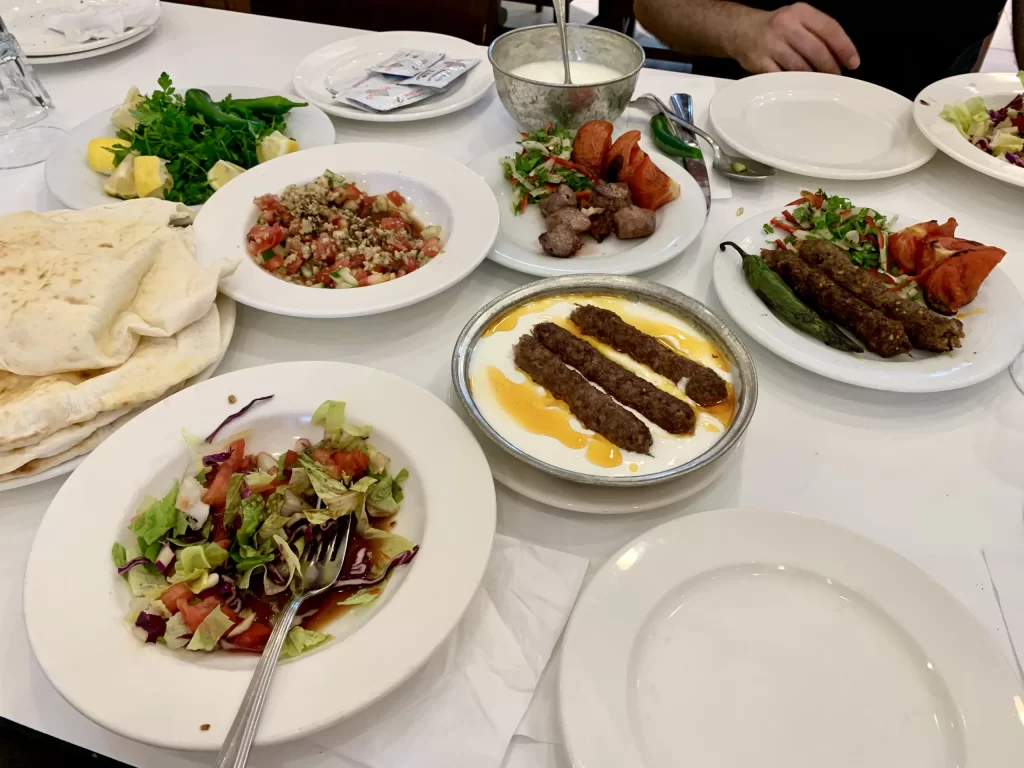
“Tea?” comes the traditional question from the waiter at the end of the feast. Of course we’ll have one, and not just one. But we save the coffee for later. We’ll need it after our visit to the bustling market.
At the market
It is almost impossible to walk through the narrow streets of the historic market at a busy hour. The smell of spices, especially hot dried peppers, smouldering scented sticks, and heated copper all mix here. The space is filled with the more or less loud conversations of vendors and customers haggling for the best price, the clatter of passing visitors on the old tiles and, above all, the clink of hammers hitting the copper sheets that master smiths have been bending and decorating for centuries and generations into traditional decorative trays, plates, pots and ornamental lamps.
Perhaps every corner of the market is literally lined with copper and bronze products. The market also got its name after copper – The Coppersmith Bazaar (Bakırcılar Çarşısı). It was established during the Ottoman Empire, when it served as a centre for copper production and trade. Although its significance has changed over time, it remains a place where tourists looking for a piece of history purchase hand-wrought bowls or Turkish coffee pots.
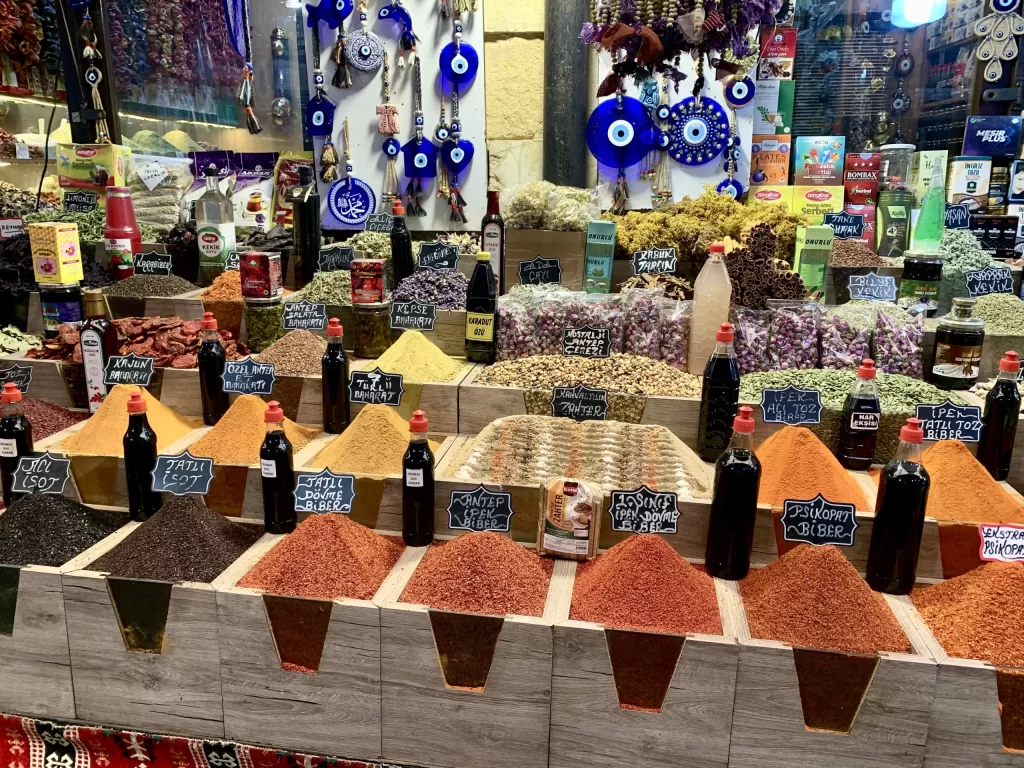
We escape the sounds of rhythmic tapping and shouted conversations into a café. Stepping into the courtyard of the market in which the café is located, it is as if we find ourselves in a different, much quieter world. Instead of the classic Turkish coffee this time, I try the menengiç coffee, typical of Gaziantep. Made from the fruit of the wild pistachio tree, the coffee has a mild, nutty and slightly sweet taste. We notice that pistachios play an important role in the local culture at every turn.
The pistachio capital
Walking down the alleyway leading past Gaziantep Castle, we pass one pistachio shop after another. It’s no coincidence, we are in the city known as the Pistachio Capital of Turkey.
Pistachios are an essential part of Gaziantep’s culture, economy and, most importantly, gastronomy. “Try it!” one of the shopkeepers gives us a free sample. He knows how to win over a customer; we’ll be back for some delicious pistachios later in the day.
Turkey is one of the world’s biggest pistachio producers ever (along with Iran and the USA). Up to 200,000 tonnes of pistachios are produced in Turkey each year, and 80% of this is produced in Gaziantep and nearby Şanlıurfa. Gaziantep pistachios are called ‘Antep fıstığı’ (literally ‘Antep pistachios’) in Turkey, referring to the original name of the city.
Today it is called Gaziantep, but locals simply call the town Antep, as that was its original name. The town was given the name Gazi in 1921 after its inhabitants fought heroically during the Turkish War of Independence (1919-1923) and defended themselves against the French occupation. The word “Gazi” means “victor” or “hero”, and thus recalls the courage of the locals.
Pistachios provide work for tens of thousands of people in the region, but more importantly, they are part of Turkey’s most popular desserts. You can’t leave Gaziantep without tasting the most famous – pistachio baklava.
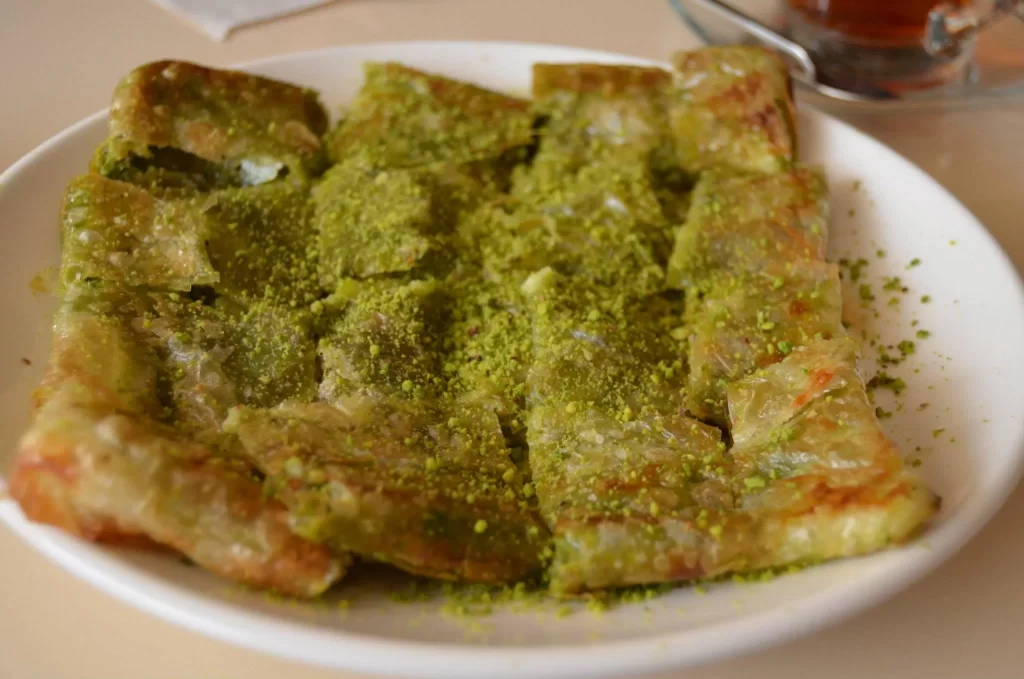
Katmer, made from a delicate puff pastry-like dough filled with pistachios and thick Turkish cream, also takes pride of place among the popular desserts. Once filled, the dessert is baked in a pan or oven until golden and crispy.
We continue on through the streets of the historic centre, where, in addition to Turkish signs, shop signs often appear in Arabic. Up to half a million Syrian refugees live in Gaziantep, which has a population of 2 million. After Istanbul, it is the largest concentration in Turkey, since Gaziantep is also only two hours away from Aleppo. The town is called Halep in Turkish and you’ll see signs for it all over Gaziantep.
Just a short walk from Gaziantep Castle, we talk to a merchant from Syria, selling traditional jewellery. He tells us that he used to be an engineer in Syria but had to leave the country because of the war. Who knows, maybe he will return to Syria again after the recent overthrow of the Assad regime. Many Syrian refugees who have found a temporary home in Turkey dream of doing so.
Life goes on
The Gaziantep castle where the Syrian trader sells his jewellery is closed and partially covered by scaffolding. Part of it collapsed in the devastating earthquake in February, 2023. In Gaziantep itself, the effects of the earthquake are not so visible at first sight. The city was not as badly hit as other areas, where old houses are still being demolished and replaced by new ones.
But the impact of the disaster resonates differently here – Gaziantep has become a refuge for thousands of people who have moved here from the affected areas. The strain on the local infrastructure is everywhere, from the endless traffic jams to the skyrocketing rent prices. These often exceed prices in the capital Ankara.
But life in Gaziantep goes on. The market is still bustling and noisy, cafes serve coffee prepared in cezve made by master coppersmiths, and pistachios disappear into the mouths of tourists and locals alike. A small bakery in the centre of town bakes traditional bread, a rather oval-looking flatbread baked golden brown and sprinkled with sesame seeds. Several employees are involved in a well-established rhythm, one processing the dough, another operating the oven and a third serving the customers. A cook comes in from the bistro next door and takes a few of the fresh, crispy flatbreads right back to his place. In the city centre, the drums resume their nightly beat, and will continue to play loudly and relentlessly tomorrow at one of the many weddings in the Turkish southeast.
